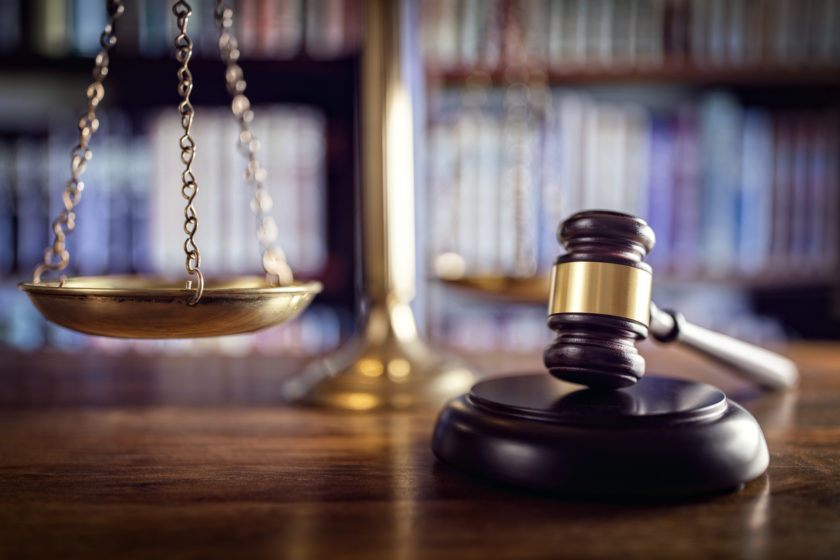Rankings.io | Personal Injury | August 17, 2020

An accident or act of negligence can result in harm to another person. Under Georgia’s personal injury laws, you can seek compensation for injuries and damages caused by another person’s negligence or wrongdoing. However, you must prove the elements of negligence before you can recover compensation for your personal injury claim.
Legal Elements of a Negligence Claim
Most injury cases involve the theory of negligence. Examples of personal injury claims revolving around claims of negligence include motor vehicle accidents, slip & fall claims, dog bite claims, and pedestrian accidents.
Legal elements of a negligence claim are:
- The person owed a duty of care to the victim.
- The person breached the duty of care.
- The breach of the duty of care created a harmful situation for the victim.
- The harmful situation was a direct and proximate cause of the victim’s injury.
- The victim sustained damages because of the breach of duty.
There must be evidence to prove each element of negligence for the victim to recover compensation. For instance, a motorcycle and a truck crash into each other. The rider sustains traumatic brain injuries and spinal cord injuries.
For the rider to recover compensation, there must be evidence that the truck driver’s actions directly led to the cause of the accident. There must also be evidence that the accident was a direct and proximate cause of the rider’s injuries and damages. If you cannot prove any of the elements required for a negligence claim, the motorcyclist cannot recover compensation from the truck driver.
In many personal injury cases, there is direct evidence that supports a claim of negligence. However, what happens when there is no direct evidence to prove that the at-fault party was negligent? Is there any legal avenue the victim can pursue to recover compensation?
Basing the Injury Case on Circumstantial Evidence
In some cases, a victim may rely on the legal theory of res ipsa loquitur. The term is Latin. It means “the thing speaks for itself.”
In a court case, res ipsa loquitur allows a victim to prove a defendant’s liability for damages by establishing a presumption of negligence instead of proving actual negligence. In other words, instead of using direct evidence, the victim uses circumstantial evidence to prove fault.
Direct evidence would include things such as video of a bicycle accident, photographs of broken steps, and eyewitness testimony that a driver rear-ended another vehicle. Direct evidence is used to prove a fact about the case.
On the other hand, circumstantial evidence does not establish a fact. It leads a person to infer that a fact exists. For example, a vehicle rear-ends another vehicle at a red light.
The only direct evidence is the conflicting stories of the two drivers. However, data from the red light indicates that it was red at the time of the crash. A jury may infer that the driver in the front stopped for the red light.
Since the accident was a rear-end crash, the jury may infer from the circumstantial evidence that the driver in the rear vehicle was at fault for the crash. The circumstantial evidence pointed to a logical conclusion based on the other circumstances and facts of the case.
Using Res Ipsa Loquitur in a Personal Injury Case
Before you can use res ipsa loquitur to ask a jury to infer that a defendant acted negligently, you must meet certain requirements:
- You must show that the incident would not usually occur without someone acting negligently.
- The negligent acts are within the scope of the duty of care that the defendant owed to the victim.
- Any items or circumstances involved in the incident were solely within the defendant’s control.
- The evidence in the case rules out the possibility that another party caused the victim’s injuries.
- The evidence in the case rules out the possibility that the victim caused his or her injuries.
If a party is successful in using circumstantial evidence under res ipsa loquitur to infer negligence, the victim should recover compensation for damages. Deciding damages and placing a value on the damages do not change.
Determining Damages in a Circumstantial Injury Case
Once negligence is inferred and the jury finds that the defendant is responsible for causing the victim’s injury, determining damages should follow the same process as in a direct evidence injury case.
The victim should be entitled to receive compensation for economic damages, such as medical bills, loss of income, personal care, and diminished earning capacity. Also, the victim should receive compensation for non-economic damages, including physical pain, emotional suffering, loss of enjoyment of life, disabilities, and mental anguish.
Do not forget. You need evidence to prove the incident caused your injuries. You also need evidence establishing your damages to recover compensation for a personal injury claim.
Contact the Atlanta Personal Injury Lawyers at Hasner Law PC For Help
For more information, please contact the Atlanta personal injury law firm of Hasner Law P.C. at our nearest location to schedule a free consultation today.
We serve in Fulton County, Chatham County, and its surrounding areas:
Hasner Law PC – Atlanta Law Office
2839 Paces Ferry Rd SE #1050
Atlanta, GA 30339
(678) 888-4878
Hasner Law PC – Savannah Law Office
221 W York St
Savannah, GA 31401
(912) 234-2334


